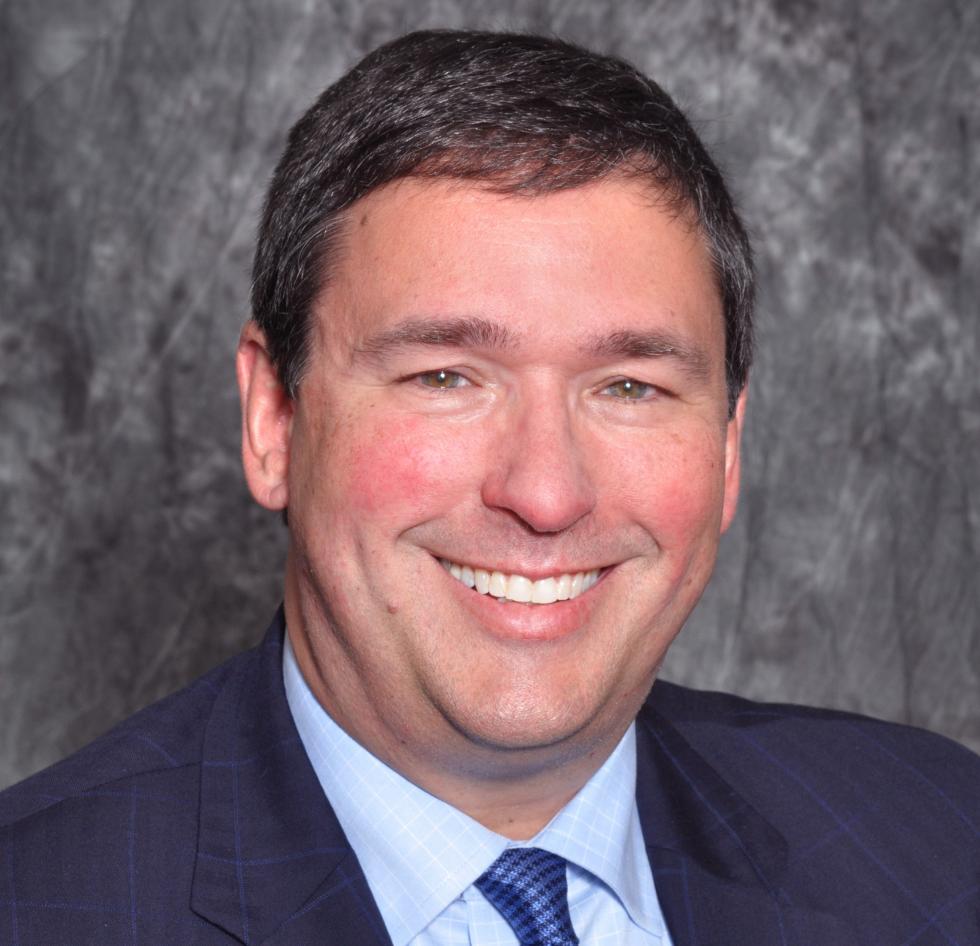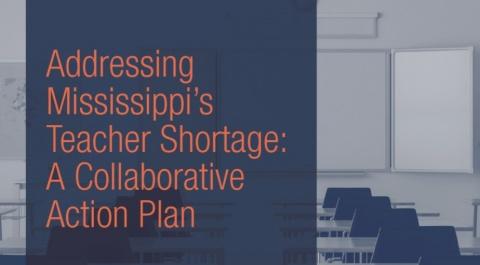Teacher shortages, workforce issues demand bolder solutions from states
By Stephen Pruitt, SREB President
Across the SREB states, many leaders are realizing the need for action on one of the biggest challenges in education: ensuring every student has a well-prepared teacher in every class, every year, no matter where they live.
I know personally how teachers can impact students’ lives. I started my career as a science teacher in Fayette County, Georgia, and I’m still humbled when former students tell me how I helped them become who they are as adults and find satisfying careers to pursue.
The research is clear: Teachers are the single most important influence on student success.
However, the greatest and most noble profession is in trouble. The pipeline has become a trickle, and our existing teachers are under enormous pressure. Too many students don’t have the opportunity to connect with well-qualified teachers in every class.
Solving this issue won’t be easy; leaders in multiple SREB states believe it requires nothing short of a major overhaul of the teaching profession. We have much work to do. But we can get it done.
We can find new ways to support teachers and attract more talented people into teaching, or we will regress as a society and allow our economy to suffer permanent damage.
These proposed changes aren’t just about raising teacher pay, better preparation, more professional development and mentoring. It’s all this and more — including a complete redesign of how educators can take on more advanced roles, impact students in new ways and be rewarded with the professional-level pay and respect they deserve.
Teacher shortages — and their impact on the workforce in each SREB state — are big problems that deserve comprehensive solutions.
Shortages across the South
Every state in our region has teacher shortages, usually in math, science, special education, career-and-technical education, and world languages. Even some elementary schools can’t find the well-qualified teachers they need, and 11 SREB states report shortages of English teachers in some areas. The shortages are often worse in rural and high-poverty schools.
This leaves schools to depend on emergency-credentialed teachers or long-term substitutes — who might be doing their best, but don’t have the same knowledge and preparation as full-time educators.
Answers to big problems are never easy, but the good news is that real solutions are within our reach. Working together, leaders and educators in SREB states are proposing many promising solutions to elevate the teaching profession.
Movement in Mississippi
In Mississippi, SREB’s teacher-policy specialist Megan Boren and I testified before the Mississippi Senate education committee last month, answering questions and presenting teacher workforce data and research.
The data we shared was sobering: A Mississippi teacher with 15 years of classroom experience took home $28,000 on average in 2020 after taxes, health insurance and retirement contributions.*
And Mississippi isn’t alone in this struggle. Across the 16 SREB states, the average take-home pay for mid-career teachers ranges from less than $25,000 to just over $41,000 — with only two states topping these numbers: Delaware (at more than $47,000) and Maryland (more than $54,000).
In many states, a lack of significant increase in pay for teachers — combined with high costs of family health insurance for teachers — means that some single-parent teachers take home so little, they qualify for some types of government assistance.
Impact on the workforce
SREB estimates that roughly 18 million people in the South alone face the risk of becoming unemployable as many low-wage, low-skill jobs disappear. New technologies and a growing dependence on automation are changing many of our jobs and the levels of education and skills that are required.
In other words, the impact of the teacher shortage on students’ learning is putting our society at risk.
Our teachers will play a major role in preparing our children for the challenges ahead. Yet we pay teachers nationwide about 20% less on average than professionals in other fields with the same level of education.
Solving this issue won’t be easy… It requires nothing short of a major overhaul of the teaching profession.
Much of the South is behind the rest of the country in teacher compensation. In the 16 SREB states, teacher salaries averaged $53,340 in the 2018-19 school year (the latest comparable data available), compared with $62,304 nationally.
It’s not just about pay and benefits, however, as the Mississippi leaders were quick to realize. Most teachers who leave the profession also point to the stress of the job (which may be even worse as the pandemic rolls on), a lack of respect and support, and inadequate preparation and professional development.
Building consensus
That’s enough of the bad news. We know steps we can take to address these issues.
SREB has worked with Education Human Capital Roundtables in four states — starting with North Carolina, then in Alabama and Oklahoma, and most recently in Mississippi. These roundtables brought teachers, state education officials, college professors and deans, workforce leaders and others together to develop solutions to these shortages.
In Mississippi, the Governor’s Education Human Capital Task Force has released its detailed recommendations to curb teacher shortages and address teacher workforce issues. The task force, made up of teachers, state leaders and others, developed its recommendations with support from SREB. SREB.
The task force and similar roundtables in other states followed the work of the SREB Teacher Preparation Commission, consisting of leaders from many of the SREB states. We then supported leaders in states that wanted to delve deeper into solutions.
In North Carolina, the roundtable has proposed a new path for teachers that could make teaching careers more rewarding and meaningful than ever before.
Leaders in the Tar Heel State reached consensus that severe teacher shortages in many parts of the state can’t be blamed on pay alone. Shortages likely also are a result of the state’s complex teacher-licensing system and a lack of professional advancement opportunities.
That reality ends up forcing many educators to leave the profession just when they’re hitting their professional stride.
A new system includes apprenticeships for entry-level teachers to give them more experience from the start. Teachers can proceed into professional and advanced roles during their careers, potentially earning much higher salaries than before and making an even bigger impact on students.
The State Board of Education is considering many of those changes and has assigned the state teacher-licensing agency to review the ramifications of the plans.
Common solutions
What kinds of solutions are these roundtables pursuing to elevate the profession and bring an end to the shortages? We’re working on a full report, but here’s a preview.
- Strengthen the pipeline. Encourage more young people to pursue teaching as a meaningful career. High school and community college courses in education can encourage more students to enter teaching. Also, new teachers need better preparation and long-term experience before they enter the classroom — to know how to use the latest technology, scientific and science-based approaches to teaching, and how to nurture all students’ social-emotional needs.
- Keep good teachers longer. Teachers need tailored supports in their careers and more opportunities to advance. Redesigning old licensing systems to provide advancement options and certify teachers for their knowledge, skills, competencies, and student engagement and impact is key to elevating the profession. Educators should also be licensed and rewarded for classroom leadership roles — mentoring new teachers, providing extra support for students, and leading professional development for their peers.
- Raise compensation and make benefits affordable. Increase teacher salaries to professional levels, financially incentivize professional growth and responsibility, and lessen teachers’ costs for family health insurance plans. States can also provide teachers with retirement plan options and portable plans that can increase retirement savings for some teachers, all while saving the state money.
Our students in SREB states deserve the best teachers we can possibly provide for them.
That leaves us with a choice as leaders. We can find new ways to support teachers and attract more talented people into teaching, or we will regress as a society and allow our economy to suffer permanent damage.
We all want better for our states and the communities where we live, so let’s get to work. We can meet with you, connect you with other states, and provide the data and research you’ll need. As always, we’re just an e-mail, text or phone call away.
*Figure based on new data for the 2019-20 school year, the latest available, as calculated by SREB and based on federal and other national teacher-salary data sources.



